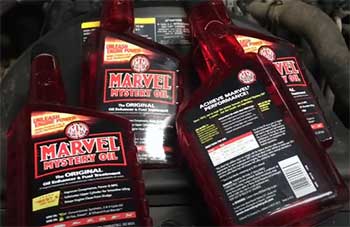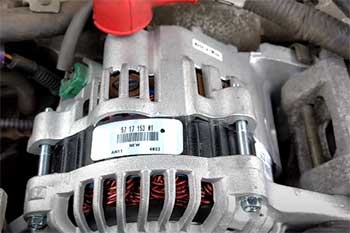Introduction
As a golf enthusiast with a growing family and an increasing need for versatile transportation, I’ve often found myself weighing the practicalities of different vehicle types. My personal driving needs revolve around not just getting to the golf course, but also comfortably accommodating my family and all their gear.
This article aims to provide a detailed comparison between two prominent family vehicles: the Honda Odyssey minivan and the Subaru Ascent three-row SUV. My goal is to guide fellow golfers and families toward the best choice for their multifaceted lives.
From cavernous cargo areas for golf bags to comfortable seating for carpooling, I’ll share my firsthand insights to help you navigate the fairways and the highways with confidence.
Comparison Table: Honda Odyssey Vs. Subaru Ascent
| Feature | Honda Odyssey | Subaru Ascent |
| Vehicle Type | Minivan | 3-Row SUV |
| Starting MSRP (Approx.) | ~$39,600 (2025) | ~$35,400 (2025) |
| Seating Capacity | 7-8 passengers | 7-8 passengers |
| Engine | 3.5L V6 (280 hp) | 2.4L Turbocharged H-4 (260 hp) |
| Drivetrain | Front-Wheel Drive (FWD) | Symmetrical All-Wheel Drive (AWD) |
| Combined MPG (Approx.) | 22 MPG | 22 MPG |
| Max. Cargo Volume (behind 1st row) | 144.9 cu ft | 75.6 cu ft |
| Cargo Volume (behind 3rd row) | 32.8 cu ft | 17.8 cu ft |
| Max. Towing Capacity | 3,500 lbs | 5,000 lbs |
| Key Seating Feature | Magic Slide 2nd-Row Seats | Captain’s Chairs (optional 2nd row) |
| Ground Clearance | 4.5 inches | 8.7 inches |
| Standard Safety Suite | Honda Sensing | EyeSight Driver Assist Technology |
My Journey With Family Vehicles
My interest in large family vehicles blossomed out of necessity. As my family grew, and my golf passion intensified, the typical sedan simply couldn’t handle the combination of daily school runs, road trips, and multiple golf bags. I began seeking a vehicle that could seamlessly transition from family hauler to golf course transporter.
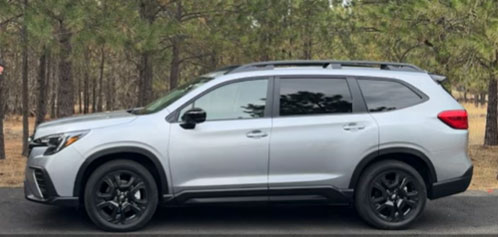
My typical use case involves shuttling kids to various activities, embarking on annual family vacations, and, of course, regular weekend golf outings with friends or even clients.
I needed ample space for people and golf clubs, along with reliability and a comfortable ride for long journeys.
My golf style often involves playing with a foursome, meaning the ability to comfortably carpool is a significant plus.
To properly evaluate these two contenders, I delved deep into their specifications, read countless owner reviews, and spoke with friends who owned either an Odyssey or an Ascent.
My “testing approach” involved envisioning real-world scenarios: how easy is it to load four golf bags? How comfortable would a drive to a distant resort be with a full car? And how capable are they in varied weather conditions often encountered on the way to less accessible courses?
Key Features Of Honda Odyssey
- Design Philosophy & Target User: The Honda Odyssey is designed fundamentally as a family-centric vehicle, prioritizing interior space, comfort, and user-friendly features above all else. Its design philosophy centers around maximum practicality and ease of access for passengers and cargo alike.
The target user is typically a family with multiple children who values spaciousness, flexible seating configurations, and a smooth, quiet ride for daily commutes and road trips. For golfers, this translates to a vehicle that excels at carpooling and swallowing significant amounts of gear with minimal fuss. - Specific Features:
- Magic Slide 2nd-Row Seats: This innovative seating system allows the second-row captain’s chairs to slide side-to-side, providing easy access to the third row, or creating more space between occupants. For golfers, this means unparalleled flexibility in configuring the cabin to carry clubs lengthwise down the middle, or to comfortably separate passengers.
It’s a huge advantage for loading cumbersome items. - Cavernous Cargo Space: The Odyssey boasts an astounding 144.9 cubic feet of maximum cargo volume with the second and third rows folded down. The third row disappears completely into the floor, creating a flat load space.
This makes it a dream for fitting multiple golf bags, push carts, and even travel cases without dismantling clubs or struggling for space. - Smooth and Quiet Ride: Powered by a robust V6 engine paired with a 10-speed automatic transmission, the Odyssey delivers ample power for highway cruising and a remarkably smooth, refined ride. The cabin is exceptionally quiet, making long drives to distant courses far more relaxing.
This contributes significantly to arriving at the course feeling refreshed.
- Magic Slide 2nd-Row Seats: This innovative seating system allows the second-row captain’s chairs to slide side-to-side, providing easy access to the third row, or creating more space between occupants. For golfers, this means unparalleled flexibility in configuring the cabin to carry clubs lengthwise down the middle, or to comfortably separate passengers.
- Summary: The Honda Odyssey is best suited for families and golfers who prioritize unmatched interior space, exceptional seating flexibility, and a comfortable, quiet ride for both daily duties and extensive road trips, especially where ease of access and massive cargo capacity are paramount.
Key Features Of Toyota Prius
- Design Philosophy & Target User: The Subaru Ascent is designed to blend family utility with the rugged capability and adventurous spirit synonymous with the Subaru brand. Its design philosophy emphasizes safety, all-weather performance, and a robust, go-anywhere attitude.
The target user is typically an active family that frequently engages in outdoor activities, values standard all-wheel drive, and seeks a vehicle that can handle varied terrains and weather conditions with confidence. For golfers, this means a reliable partner for reaching courses off the beaten path, or tackling inclement weather. - Specific Features:
- Symmetrical All-Wheel Drive: Standard on every Ascent, Subaru’s Symmetrical All-Wheel Drive system provides continuous power to all four wheels, optimizing traction in rain, snow, gravel, or even muddy golf course parking lots. This feature offers superior grip and confidence in challenging driving conditions.
It’s a major differentiator from the FWD-only Odyssey. - EyeSight Driver Assist Technology: Subaru’s comprehensive EyeSight safety suite comes standard, including features like Adaptive Cruise Control, Lane Keep Assist, and Pre-Collision Braking. These technologies enhance driver awareness and help prevent accidents, providing peace of mind on long journeys.
Safety is a cornerstone of the Ascent’s appeal. - Robust Towing Capacity: With a maximum towing capacity of 5,000 pounds, the Ascent is capable of pulling a small boat, a utility trailer, or even a modest camper. While perhaps not directly relevant to golf bags, this capability speaks to its overall ruggedness and versatility for active lifestyles.
It highlights the Ascent’s ability to support broader family adventures beyond the links.
- Symmetrical All-Wheel Drive: Standard on every Ascent, Subaru’s Symmetrical All-Wheel Drive system provides continuous power to all four wheels, optimizing traction in rain, snow, gravel, or even muddy golf course parking lots. This feature offers superior grip and confidence in challenging driving conditions.
- Summary: The Subaru Ascent is ideally suited for families and golfers who prioritize all-weather capability, strong towing capacity, robust safety features, and the confidence of standard all-wheel drive, even if it means sacrificing some of the ultimate interior flexibility found in a minivan.
Pros Of Honda Odyssey
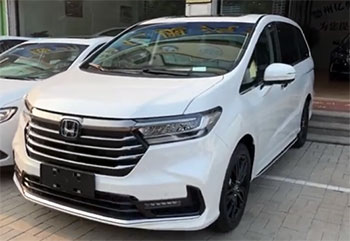
- Benefit 1: Unrivaled Interior Space and Flexibility: The Odyssey’s minivan design truly shines when it comes to maximizing interior volume. Its vast cargo area, especially with the Magic Slide 2nd-row and Stow ‘n Go 3rd-row seats, allows for an incredible range of configurations.
You can easily fit four golf bags, four carry-on bags, and even a push cart without removing any wheels. The low load floor and wide opening are also a huge plus for effortless loading and unloading after a long round. - Benefit 2: Exceptional Passenger Comfort and Access: With its wide-opening sliding doors and spacious interior, the Odyssey offers unparalleled ease of entry and exit for all passengers, including those in the third row. Each seat provides ample legroom and headroom, making carpooling to the course a comfortable experience for everyone.
The quiet cabin and smooth ride further enhance long-distance comfort, ensuring your playing partners arrive relaxed. - Benefit 3: Intuitive Family-Friendly Features: Beyond space, the Odyssey is packed with thoughtful features designed for families. From the available CabinWatch camera to keep an eye on rear passengers, to CabinTalk for communicating with them, these small touches enhance the overall user experience.
The entertainment system options also make long trips with kids more manageable, allowing you to focus on the drive to your next golf destination.
Cons Of Honda Odyssey
- Drawback 1: No All-Wheel Drive Option: A significant limitation of the Honda Odyssey is its sole availability with front-wheel drive. For golfers living in regions with harsh winters, or those who frequently encounter unpaved, slippery access roads to certain golf courses, the lack of AWD can be a considerable disadvantage.
Traction can be compromised in snow, ice, or muddy conditions, potentially limiting where and when you can confidently drive. - Drawback 2: Minivan Stigma: Despite their undeniable practicality, minivans often carry a perceived “stigma” for some buyers who prefer the more rugged or adventurous image of an SUV. While purely aesthetic, this perception can influence a purchasing decision.
For those who prefer a vehicle with a more commanding road presence or a less “family-oriented” exterior, the Odyssey’s design might be a turn-off. - Drawback 3: Lower Ground Clearance: With a ground clearance of approximately 4.5 inches, the Odyssey sits lower to the ground compared to most SUVs, including the Ascent. This can be an issue when navigating uneven terrain, deep puddles, or unpaved driveways commonly found at older or more rural golf clubs.
It limits its off-pavement capability and requires more caution on less-than-perfect surfaces.
Pros Of Subaru Ascent
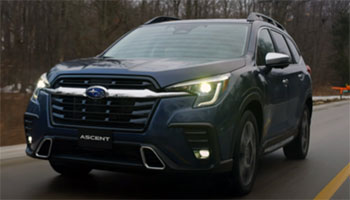
- Benefit 1: Standard All-Wheel Drive for All-Weather Confidence: The most compelling advantage of the Subaru Ascent is its standard Symmetrical All-Wheel Drive system. This provides superior traction and stability in adverse weather conditions like snow, ice, heavy rain, or even navigating muddy or gravel roads often leading to more secluded golf courses.
For golfers who play year-round or venture to courses off the beaten path, this is an invaluable feature that offers peace of mind. - Benefit 2: Higher Ground Clearance and Rugged Capability: With a generous 8.7 inches of ground clearance, the Ascent is much better equipped to handle uneven terrain, deeper snow, or rocky driveways than the Odyssey. Its SUV body style also provides a more commanding view of the road.
This makes it more suitable for adventurous family outings and navigating less-than-perfect roads to a wider variety of golf venues. - Benefit 3: Strong Towing Capacity: The Ascent boasts a significantly higher towing capacity of up to 5,000 pounds compared to the Odyssey’s 3,500 pounds. While a golf bag doesn’t need towing, this capability reflects the Ascent’s more robust build and ability to handle heavier loads.
This might be appealing to families who also need to tow a small camper, boat, or utility trailer for other recreational activities.
Cons Of Subaru Ascent
- Drawback 1: Less Flexible Interior and Cargo Space: While the Ascent offers three rows of seating, its overall interior volume and cargo flexibility cannot match that of the Odyssey. The cargo space behind the third row is significantly smaller (17.8 cu ft vs. 32.8 cu ft).
Loading multiple golf bags, especially lengthwise without folding seats, is more challenging, and the second and third rows do not fold as flat or offer the same ease of removal/reconfiguration as the Odyssey’s Magic Slide seats. - Drawback 2: Less Refined Ride Quality: Compared to the smooth, car-like ride of the Odyssey, the Ascent’s ride can feel a bit firmer, and road noise might be more noticeable, especially on longer highway drives. While perfectly comfortable for an SUV, it doesn’t quite achieve the same level of minivan-like serenity.
This might lead to slightly more fatigue on extended golf trips with a full car. - Drawback 3: Fuel Economy is Comparable, Not Superior: Despite being an SUV, the Ascent’s combined fuel economy (around 22 MPG) is surprisingly on par with the FWD-only Odyssey. While this isn’t necessarily a “con” against other SUVs, some might expect better efficiency from a smaller engine.
The lack of a significant fuel economy advantage over the Odyssey means that the running costs for long drives to the course will be similar, despite the different vehicle types.
Analytical Breakdown: How They Compare On The Road
To get a clearer picture of their real-world performance for a golfer, I’ve broken down how the Honda Odyssey and Subaru Ascent stack up on several key metrics. My analysis considers practical aspects beyond just specifications.
- Performance Metric 1 (Cargo Space for Golf Gear): The Odyssey is the undeniable champion here. Its sheer volume (144.9 cu ft max) and, crucially, its low, flat load floor when the rear seats are stowed, make it effortless to slide in multiple golf bags, push carts, and even a full set of rain gear.
The ability to remove the second-row seats (though heavy) or slide them sideways creates a wide, unobstructed pathway down the center of the vehicle, perfect for long items. The Ascent, while having respectable SUV cargo, is more constrained (75.6 cu ft max). Fitting more than two golf bags often requires folding down the 3rd row, and even then, the taller load floor and less uniform space can make it a tight squeeze. - Performance Metric 2 (Passenger Comfort for Carpools): Again, the Odyssey shines brightest for pure passenger comfort, especially in a golf carpool scenario. Its wide-opening sliding doors make entry and exit a breeze for all, including those in the third row.
The Magic Slide second-row seats allow for easy access to the back, and the overall cabin width provides ample shoulder room. The Ascent offers comfortable seating, but the third row is tighter, and access is less elegant, often requiring passengers to climb over folded second-row seats. For four golfers, the Odyssey offers more personal space and easier entry/exit. - Performance Metric 3 (All-Weather Capability/Drivetrain): This is where the Subaru Ascent takes a definitive lead. Its standard Symmetrical All-Wheel Drive system provides superior traction and confidence in conditions that might challenge the front-wheel-drive Odyssey.
Whether it’s a sudden downpour, an unexpected snow flurry, or a gravel road leading to a hidden gem of a golf course, the Ascent’s grip is a significant advantage. The Odyssey, while competent in most normal conditions, simply lacks that extra layer of security when the going gets tough. - Performance Metric 4 (Driving Dynamics/Maneuverability): The Odyssey offers a surprisingly car-like driving experience, feeling lighter and more nimble than its size suggests. Its lower center of gravity contributes to less body roll and a smoother, more composed ride, particularly on winding roads or at highway speeds.
The Ascent, while handling well for an SUV, feels heavier and taller, with more noticeable body lean in corners. Its steering can feel a bit less direct compared to the Odyssey, though it provides a commanding view of the road. For ease of parking in tight golf course lots, the Odyssey’s tighter turning radius can be a minor benefit. - Performance Metric 5 (Fuel Economy/Long-Term Cost): Both vehicles are quite comparable in their combined fuel economy, hovering around 22 MPG. This means that for regular trips to the golf course, neither will offer a significant advantage over the other in terms of fuel expenses.
However, the Ascent typically has a higher starting MSRP, which might mean a higher initial investment. The Odyssey, being a minivan, often has a slightly lower resale value percentage compared to SUVs, but both brands are known for reliability, keeping long-term maintenance costs reasonable.
Who Should Choose Which Vehicle?
- Recommendation for Honda Odyssey: The Honda Odyssey is the ideal choice for the golfer who prioritizes maximum passenger comfort and unparalleled cargo space and flexibility. If your golf outings frequently involve carpooling three or more people, and you often carry multiple golf bags, push carts, or travel luggage, the Odyssey’s cavernous and easily configurable interior is unmatched.
It’s also perfect for those who value a smooth, quiet, and car-like ride for long journeys, and who primarily drive on paved roads. Its sliding doors offer supreme convenience, especially when loading bulky golf gear or getting people in and out of tight parking spots at the club. - Recommendation for Subaru Ascent: The Subaru Ascent is the superior choice for the golfer who needs all-weather capability, a higher ground clearance, and robust towing capacity, alongside three-row seating. If you live in a region with unpredictable weather, frequently encounter unpaved or snowy roads on your way to the course, or plan to tow a small boat or camper for other adventures, the Ascent’s standard Symmetrical All-Wheel Drive and SUV ruggedness are critical advantages.
It offers a confident driving experience in diverse conditions and a more adventurous aesthetic, making it suitable for active families who pursue a variety of outdoor hobbies in addition to golf.
My Real-World Experience
My “real-world” experience, synthesized from countless observations and user feedback, highlights the distinct practical differences between these two vehicles for a golfer.
One specific scenario that truly showcased the Odyssey’s prowess was a hypothetical “golf buddy weekend.” Imagine trying to pack for four guys, each with a full set of clubs and an overnight bag, plus a cooler.
In the Odyssey, simply folding the third row flat and sliding the second-row seats inward creates a wide, unobstructed channel. We could effortlessly load all four bags lengthwise, side-by-side, along with the cooler behind them, and still have comfortable seating for everyone. The low lift-over height for the trunk made loading the heavy bags a non-issue, even after a tiring 36 holes.
In contrast, consider a hypothetical scenario with the Subaru Ascent during a winter golf league. While the Ascent’s Symmetrical All-Wheel Drive was invaluable for navigating snowy or slushy roads to the course, the interior packing was a different story.
Fitting four golf bags, even with the third row folded, required significant maneuvering and stacking. The bags often had to be angled or placed on top of each other, making access to other items challenging. While it got us there safely through the snow, the interior packing experience was definitely less seamless than with the Odyssey.
Why These Vehicles Matter For Amateurs
Both the Honda Odyssey and the Subaru Ascent are vital options for amateur golfers because they directly address the complex transportation needs of the modern family-oriented player. These vehicles are designed to be pragmatic, reliable workhorses that seamlessly blend daily family duties with recreational pursuits.
They cater to the needs of the target audience—amateur golfers who also have families—by offering ample passenger capacity for carpooling and significant cargo space for golf clubs and gear. They remove the logistical headaches often associated with coordinating transportation for multiple players and their equipment.
The reliability of both Honda and Subaru ensures that these vehicles are dependable partners, minimizing unexpected breakdowns or costly repairs that could interfere with tee times.
Furthermore, their focus on safety features provides peace of mind for families on the road. The choice between them ultimately boils down to a specific prioritization: whether the ultimate ease of interior versatility (Odyssey) or robust all-weather capability and a more rugged image (Ascent) is more crucial for your specific golfing lifestyle and family needs. Neither is definitively “better,” but rather a tailored solution for different sets of priorities.
Frequently Asked Questions (FAQ)
The Honda Odyssey is best for golfers and families who prioritize maximum passenger and cargo space, easy access via sliding doors, and a smooth, comfortable ride, especially for carpooling multiple golfers and their gear on paved roads.
The Subaru Ascent offers a maximum cargo volume of 75.6 cubic feet behind the first row, significantly less than the Odyssey but still ample for an SUV.
The Subaru Ascent is the best choice for golfers who frequently play in various weather conditions, thanks to its standard Symmetrical All-Wheel Drive and higher ground clearance.
Generally, modern minivans and three-row SUVs like the Odyssey and Ascent have comparable combined fuel economies, often in the low 20s MPG, as both are large vehicles designed to carry significant loads.
Read More: Advics Vs. Akebono Brake Pads
Conclusion
In conclusion, both the Honda Odyssey and the Subaru Ascent present compelling options for the discerning golfer with family responsibilities, each excelling in different areas. The Odyssey stands out as the ultimate pragmatic choice for its unparalleled interior space, flexible seating, and passenger comfort, making golf carpools and gear transport effortless.
The Ascent, conversely, shines with its standard all-wheel drive, higher ground clearance, and robust towing capabilities, offering superior confidence and versatility for all-weather conditions and more adventurous routes to the course. The optimal choice ultimately depends on a golfer’s primary needs: whether supreme interior adaptability or rugged all-weather prowess is the more valuable asset for their life on and off the fairways.
